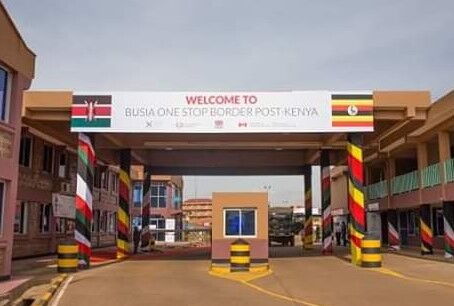Kenyans.co.ke’s investigation of some of Kenya’s most luxurious cars revealed interesting results, including the fact that some of the country’s most expensive cars have Ugandan license plates.
From a yellow Lamborghini Urus with 24 million Ksh (before taxes) to an elegant blue-black BMW i8 (16.2 million Ksh before taxes) to the Range Rover autobiography (17 million Ksh before taxes) vehicles.
If the owners of these world class machines had been fully imported and registered in Kenya, they would have paid twice the actual cost of the vehicles based on the relevant tax laws.
This explains why a large number of Kenya’s millionaires have chosen the “Ugandan Way”, where applicable taxes are significantly lower, resulting in savings of millions.
Imported cars await clearance in the port of Mombasa.
file
In an interview with Kenyans.co.ke, a citizen who had chosen to register his high-end truck in Uganda said that Kenya’s zero tolerance for old classic cars (classic cars) and left-hand drive cars had contributed to his decision to ‘ to drive. Ugandan way ‘.
He went on to explain that the regular payments for permits required to drive such a car in Kenya (usually every three months) were impractical, adding that most would be willing to pay a one-time fee if Kenya were to would facilitate the importation of such cars.
As a guide, the following information on taxation or customs for the import of used vehicles in Uganda applies: Import duty: 15 percent of the value subject to duty. Value added tax: 17 percent of the value added tax and withholding tax of 4 percent of the dutiable value.
It is important to note that there is no age limit for importing used vehicles.
On the other hand, the Kenya Excise Duty Act of 2015 imposes an import duty of 25 percent. A car under 3 years old is charged Ksh 150,000, and a car over 3 years old is charged Ksh 200,000.
In addition, the buyer will be charged a value-added tax (VAT) of 16 percent and an import registration fee (IDF) of 25 percent of the cost, insurance, and freight (CIF) value of the vehicle.
The national government also introduced a 2 percent railway development tax to help the government finance the expansion of the rail network. It was set at 1.5 percent of imported goods.
All of these expenses have led a good number of Kenya’s luxury car owners to register their cars in Uganda, which is cheaper, before they can later change license plates to Kenyan license plates.
As a result, Ugandan dealers have emerged as the main beneficiaries of the new tax system, which has increased the prices of used cars imported into Kenya.
Kenyan car dealers have cried badly over the influx of cheaper vehicles that have either been diverted from Uganda cargo or diverted inland after clearance.
The new tax laws on vehicle imports into Kenya, which came into force in December 2015, sparked public outcry.
Those looking to buy popular budget car models valued at under Ksh 1 million were hit hardest after the consumption tax nearly doubled with the change in the law.
Uganda, which shares a customs territory with Kenya and orders its used vehicles through the port of Mombasa, does not apply the same tax rules, making its imports cheaper.
The Kenyan authorities are vigilant when it comes to curbing tax evaders who illegally import vehicles. Therefore, one should be aware that the administration will check you at the border to check your documents.
To avoid problems at the border, it is important to ensure that all legal documents are in place and up to date.
According to the applicable laws, the foreign operator from the East African Community (EAC) and the Comesa countries must have a valid temporary importation of road vehicles (Form C32), which is issued at a border post, before receiving the entry permit.
You also have to apply for a foreign motor vehicle permit.
To use a Ugandan car temporarily in Kenya, one must obtain a foreign vehicle permit from NTSA. This can be done via the e-citizen portal.
Registration fees vary depending on the size of the vehicle’s engine and how long the vehicle has been used in the country.
For example, using a Ugandan license plate car that is over 2000 cc in Kenya for a 3 month period will cost you $ 101 (approximately Ksh 11,079 at the current exchange rate).
Cars under 2000cc for a similar period are billed at USD 51 (approx Ksh 5,594).
The difference in taxes between the two countries on car imports is also due to the increase in cartels that sneak excise-free vehicles through the various border points between Uganda and Kenya.

The Kenya-Uganda border post.
file